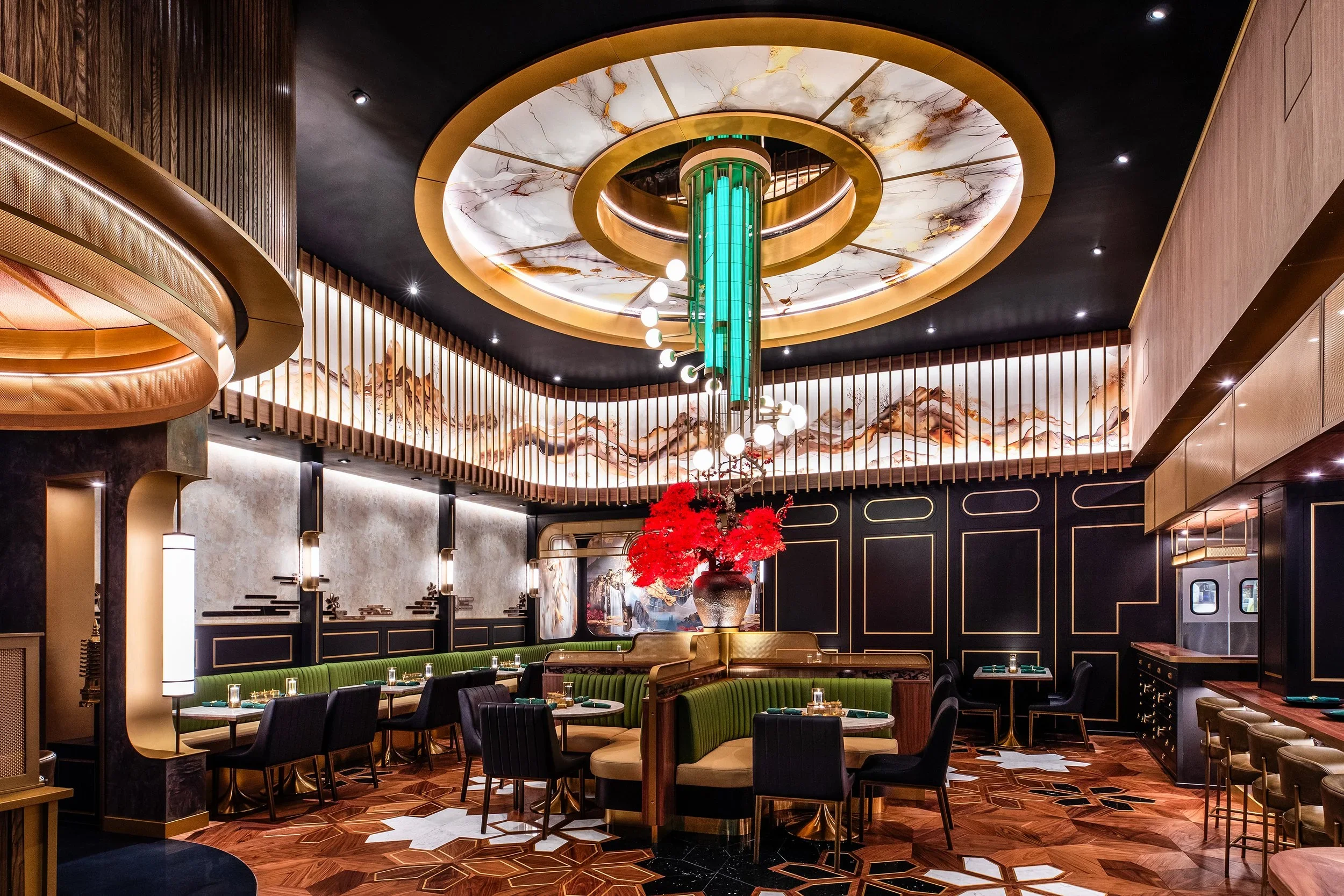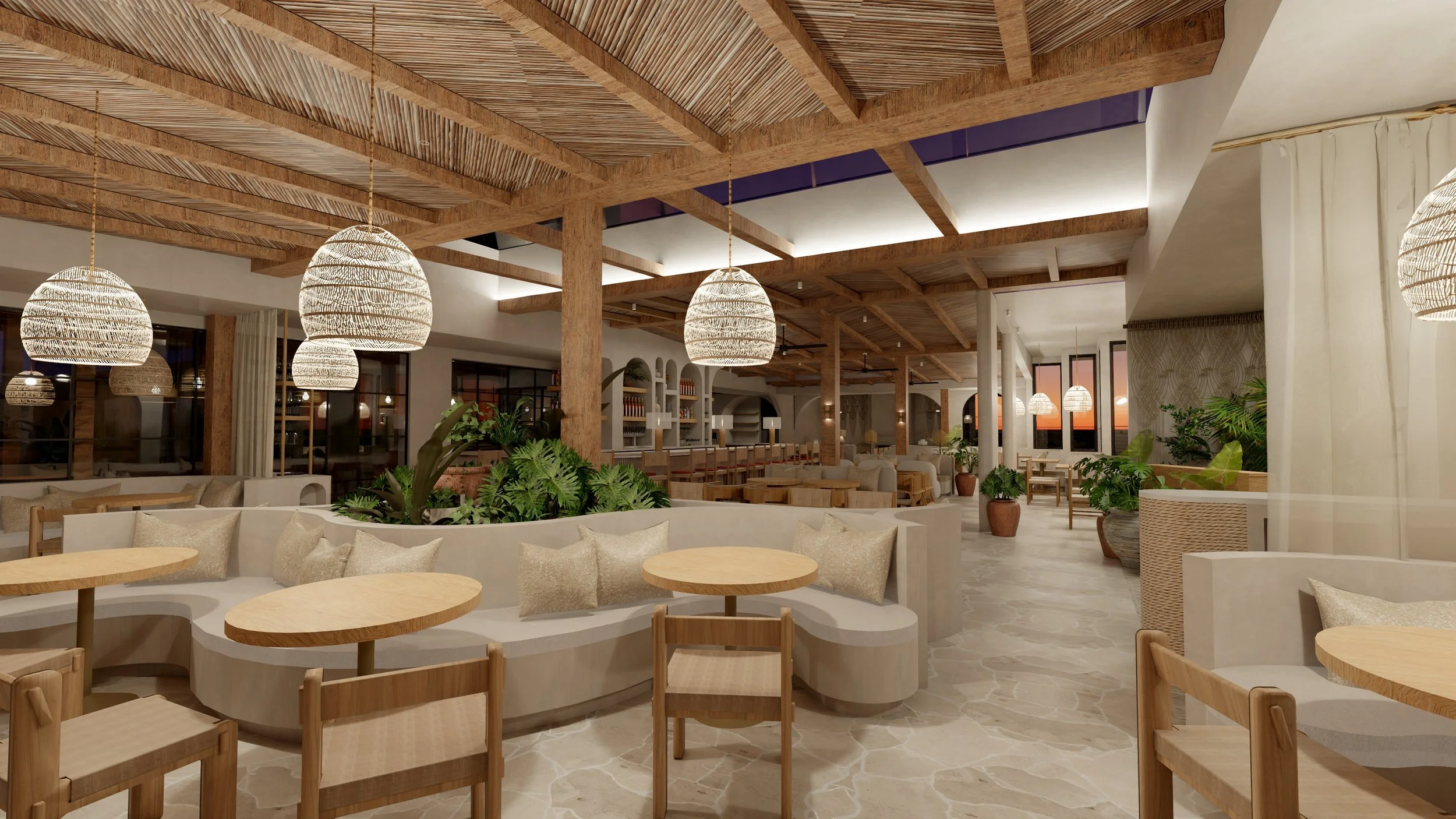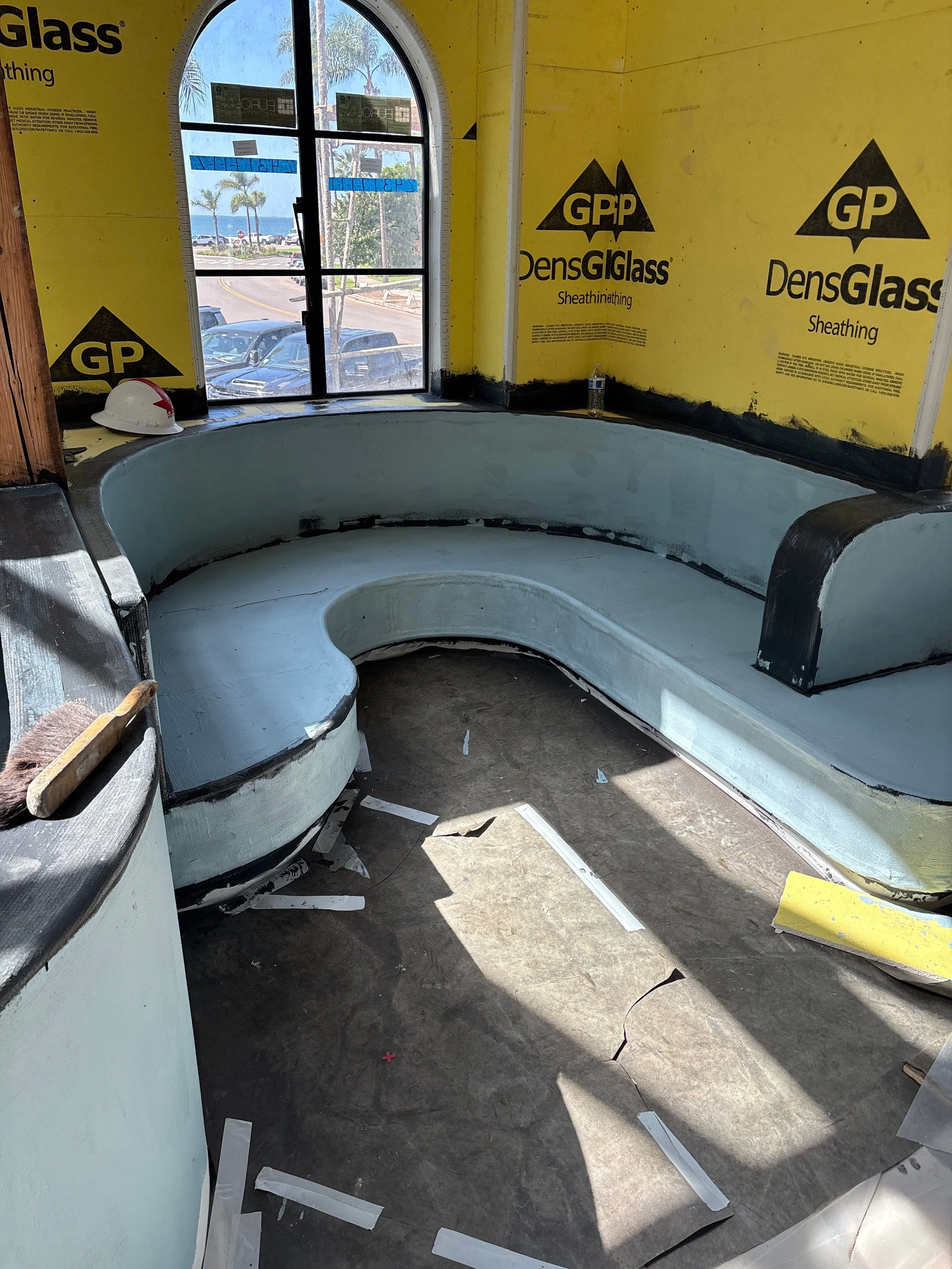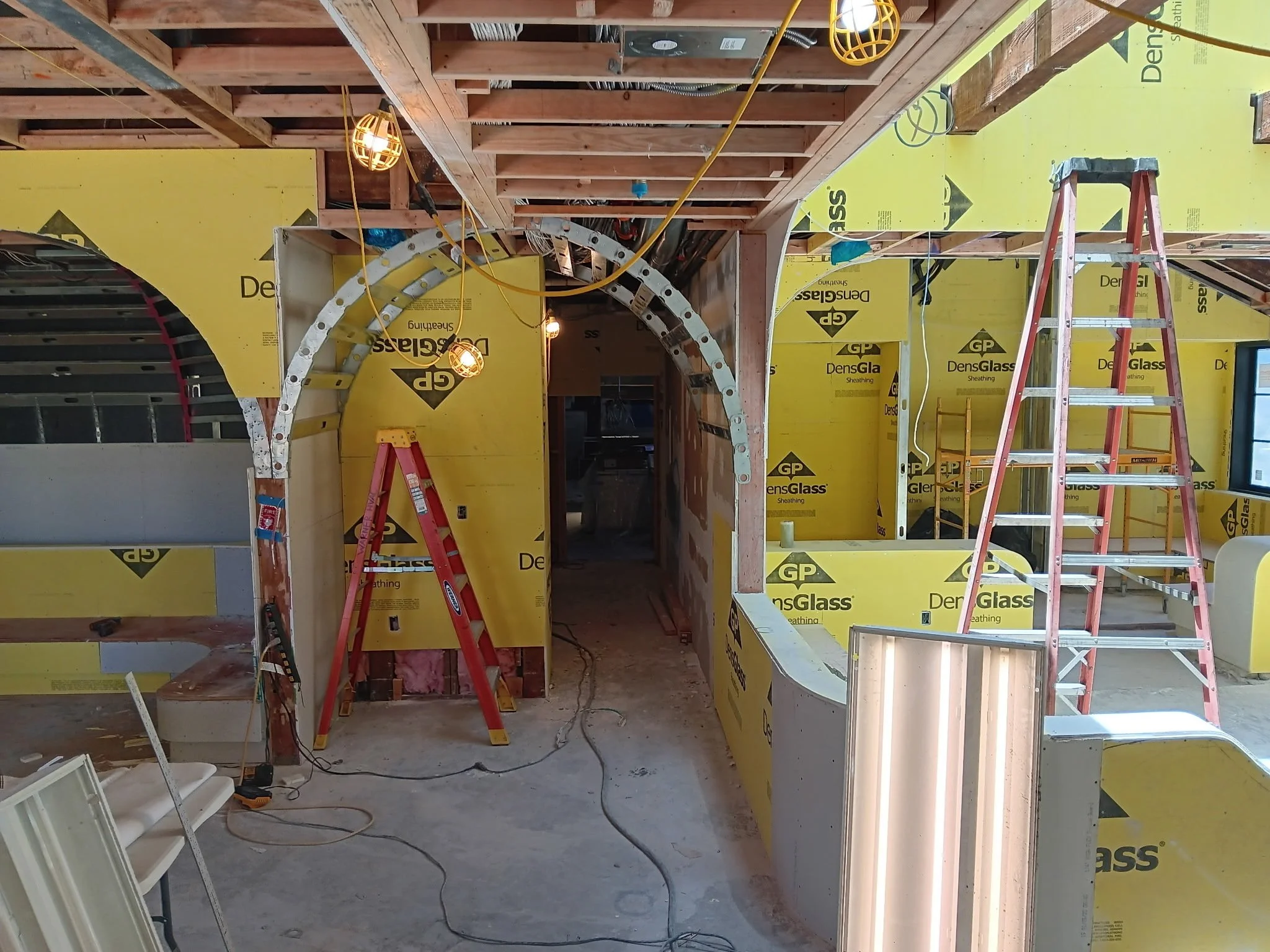Merging Functionality and Aesthetics in Modern Living Spaces
Modern living spaces have become more than just rooms to occupy—they’re reflections of how people live, think, and interact. Today’s homes aren’t simply designed for appearance; they’re shaped by the rhythm of daily life, where comfort meets intention. Homeowners are increasingly seeking designs that feel both inviting and practical, creating environments that serve real needs without compromising on style.
At Tecture Design Studio, we often find that the key to a truly satisfying home lies in finding balance—the balance between beauty and usability, openness and intimacy, personality and timeless appeal. Whether you’re designing a family home in an urban apartment or updating a compact condo, merging functionality and aesthetics in modern living spaces ensures your interiors feel alive and adaptable to every part of your life.
What Defines Modern Living Spaces?
Modern living spaces are not confined to a single look or material. They’re defined by intent—the purposeful arrangement of light, texture, and layout to promote comfort and flow. This concept is about curating an environment that reflects your way of living rather than chasing fleeting trends.
The core of a modern home lies in three simple design principles: simplicity, openness, and practicality. These spaces often highlight clean lines, neutral palettes, and smart furniture choices that save space while offering maximum function.
Simplicity doesn’t mean emptiness; it means eliminating what’s unnecessary.
Openness creates connection—between spaces and people.
Practicality ensures every piece has a reason for being there.
For many homeowners, especially those in apartments or smaller homes, these principles are essential. Modern living spaces must do more with less—providing areas for work, relaxation, and social gatherings, all within limited square footage. This is where thoughtful design makes the difference.
Functionality: The Foundation of Modern Living
Functionality is the unseen force that gives a home its rhythm. It determines how comfortably you can move, how efficiently you can store things, and how easily you can maintain your space. Without functionality, even the most beautiful interior can quickly feel impractical or cluttered.
When we design functional modern living spaces at Tecture Design Studio, we consider how people truly live—not how a space looks in a photo. Functionality starts with understanding daily habits: how someone starts their morning, entertains guests, or unwinds after a long day.
Here are a few key ways to enhance functionality in any home:
a. Flexible Layouts
Rooms that adapt are more valuable than rooms that impress. Moveable furniture, folding tables, and modular shelving allow you to change the space as your needs evolve. This flexibility is essential for modern living room sets for small spaces, where every inch counts.
b. Smart Storage
Hidden storage is one of the smartest ways to maintain a clean, uncluttered aesthetic. Built-in cabinets, ottomans with compartments, and wall-mounted organizers keep essentials out of sight without compromising design.
c. Natural Flow
A well-designed home guides movement naturally. Walkways should feel intuitive, and furniture should never block light or pathways. In open-concept designs, subtle dividers such as rugs or lighting can help define areas without adding walls.
d. Integrated Technology
While technology plays a role in modern life, it shouldn’t dominate the atmosphere. Discreetly integrated tech—smart lighting, sound systems, and temperature control—should support the experience of comfort rather than distract from it.
The Aesthetic Dimension: Crafting a Visual Story
While functionality shapes the structure, aesthetics bring emotion. The look and feel of your home tell your personal story—your taste, experiences, and priorities. Aesthetic choices are how we communicate identity without words.
Modern aesthetics favor calm over chaos. Soft textures, natural tones, and subtle contrasts create harmony. Materials like wood, glass, and stone are used not for decoration alone but to add sensory depth. The goal is to create spaces that look beautiful and feel lived-in.
a. Color and Light
Lighting and color determine the atmosphere. A mix of natural and artificial lighting keeps rooms dynamic throughout the day. Light walls paired with darker accents add depth without closing in the space. Strategic lighting also highlights key design elements while maintaining warmth.
b. Texture and Material
Combining smooth and rough textures—like linen next to marble or brushed metal against soft wool—adds interest. This tactile balance is especially valuable in modern living room furniture for small spaces, where visual variety can make a compact area feel layered and sophisticated.
c. Art and Personal Touches
Art isn’t just for walls. It can be the pattern in your rug, the shape of your chair, or the tone of your wood finish. A few meaningful pieces tell a story far better than cluttered shelves. This approach keeps modern living spaces feeling personal but not overwhelming.
Designing for Small Spaces
Designing for smaller homes or apartments can be challenging—but it’s also where creativity thrives. Small spaces demand intention, making every design choice matter more.
When we work on modern living room sets for small spaces, our team at Tecture Design Studio focuses on multi-use furniture and light-enhancing layouts that expand visual boundaries.
a. Scale and Proportion
Furniture should suit the room’s size. Oversized couches or bulky tables make a small room feel crowded. Instead, select slim-framed pieces with raised legs to create openness beneath them.
b. Layered Lighting
Relying on a single ceiling fixture flattens a room. Instead, use layered lighting—task lamps, sconces, and accent lights—to add depth and mood. This also allows flexibility depending on the activity, from reading to entertaining.
c. Vertical Thinking
When floor space is limited, look up. Wall shelves, hanging plants, and tall bookcases draw the eye upward and increase perceived space. Vertical design also creates visual rhythm and keeps the room balanced.
d. Reflective Surfaces
Mirrors and glossy finishes can visually double a room. Placing a mirror opposite a window bounces light around, brightening and enlarging even compact rooms.
Creating Connection: Open Concept Living
Open floor plans remain one of the most popular features in modern homes. They dissolve barriers, creating flow between the kitchen, dining, and living areas. This openness supports togetherness, but it must be managed carefully to avoid losing warmth.
a. Defining Zones
Use rugs, lighting, and furniture orientation to subtly mark functional areas. For example, a pendant light can define a dining space, while a sectional sofa can shape the living zone.
b. Consistent Palette
Maintaining a cohesive color palette ties everything together. Small shifts in tone—such as warm beige in one area and cool white in another—help distinguish zones without breaking harmony.
c. Acoustics Matter
Sound can travel easily in open layouts. Rugs, drapery, and upholstered furniture absorb sound, maintaining a pleasant atmosphere for both conversation and quiet.
The Role of Furniture in Modern Living Spaces
Furniture acts as both function and expression. It anchors each area, supports daily tasks, and influences how people interact with their surroundings. In modern design, furniture should serve a purpose beyond aesthetics—it should adapt to your lifestyle.
a. Choosing Purposeful Pieces
Before buying new furniture, ask what problem it solves. Does the coffee table offer storage? Does the sofa fit both lounging and hosting? Intentional furniture selection leads to less clutter and more comfort.
b. Modern Living Room Furniture for Small Spaces
Compact living areas benefit most from modular and transformable furniture. Sleeper sofas, nesting tables, and wall-mounted desks are smart investments. Pieces with clean lines and neutral tones also create a feeling of openness.
c. Balance Between Hard and Soft Elements
Mix structured furniture like metal frames or wooden chairs with softer materials like velvet cushions or fabric ottomans. This balance ensures visual comfort and prevents the space from feeling too rigid or too relaxed.
d. Longevity and Sustainability
Modern homeowners are becoming more conscious of how and where furniture is made. Choosing high-quality, sustainable materials ensures your furniture lasts while reducing environmental impact—values we uphold at Tecture Design Studio.
The Emotional Side of Design
Design isn’t only about appearance or convenience—it’s about feeling at home. The best spaces evoke calm, belonging, and inspiration. When aesthetics and function merge successfully, they create an emotional connection between people and their surroundings.
a. Comfort as a Core Element
Soft textures, cozy lighting, and intuitive layouts promote relaxation. Comfort doesn’t mean adding more; it means designing smarter.
b. Personal Identity
Your home should reflect you. Modern design provides the framework—minimal, clean, adaptable—while your personality adds color and depth. Family photos, travel mementos, or handmade art bring warmth without clutter.
c. Consistency Across Spaces
Flow isn’t just physical—it’s emotional. A consistent design language throughout your home builds continuity, helping every room feel connected to the next.
Regional Influence: Interior Designers’ Approach
Every city shapes its own interpretation of modern design. For San Diego interior designers, the natural environment heavily influences interior styles. The region’s sunny weather, ocean views, and outdoor lifestyle inspire airy layouts, light materials, and relaxed sophistication.
Designers in San Diego often focus on blurring the line between indoors and outdoors—large windows, natural ventilation, and organic materials like rattan, linen, and light oak.
This approach complements the philosophy behind modern living spaces: simplicity, openness, and functionality with a touch of local character. It’s about embracing the coastal light and letting it inform every design decision—from the placement of furniture to the color of the walls.
At Tecture Design Studio, we draw from this same spirit when designing homes that feel both current and deeply personal. We believe great design doesn’t shout—it speaks quietly through thoughtful details and honest materials.
How to Begin Your Own Modern Living Space Project
Redesigning your home may seem overwhelming, but starting with clear priorities makes the process manageable. Here’s how to begin shaping your space toward functionality and aesthetics:
Assess Your Needs – Identify how you use each room daily. Do you work from home? Entertain guests often? Knowing your patterns helps set design priorities.
Declutter First – Simplify before you add. Removing unnecessary items reveals what truly matters.
Choose a Cohesive Palette – Stick to two or three main colors with subtle variations to maintain harmony.
Plan Furniture Layout – Map your room before buying anything new. Leave space for movement and adjust until it feels natural.
Invest in Quality Over Quantity – Buy fewer, better pieces that serve multiple purposes and last longer.
Layer Lighting – Combine ambient, task, and accent lighting for depth and adaptability.
Consult a Designer – Working with professionals like Tecture Design Studio can help refine your vision and avoid costly mistakes.
The Balance That Lasts
Merging functionality and aesthetics isn’t about achieving perfection—it’s about finding harmony. Modern living spaces thrive when they support daily life while offering visual calm. Functionality makes them livable; aesthetics make them lovable.
When design decisions are made thoughtfully, every element—furniture, color, texture, and light—works together to create a home that feels natural to live in. It’s this balance that turns a simple space into a meaningful one.
At Tecture Design Studio, we believe modern design is at its best when it feels effortless yet intentional, refined yet warm. Whether you’re furnishing a compact apartment or building your dream home, the true art of modern living lies in creating spaces that make life feel both beautiful and well-designed.
Conclusion
Modern living spaces represent the union of practicality and visual appeal. They prove that good design is not about abundance but about purpose. A thoughtfully designed home improves daily living—making every action, from cooking dinner to hosting friends, smoother and more enjoyable.
Through mindful planning, well-chosen furniture, and attention to detail, any home can achieve this harmony. Whether you’re inspired by modern living room sets for small spaces, exploring modern living room furniture for small spaces, or seeking guidance from San Diego interior designers, the essence remains the same: design with intention, live with comfort, and let your space tell your story.
At Tecture Design Studio, we continue to craft interiors that balance both beauty and functionality—homes that aren’t just places to live, but places to thrive.
Frequently Asked Questions (FAQs)
1. What makes modern living spaces different from traditional home designs?
Modern living spaces focus on simplicity, function, and connection. Unlike traditional designs that often emphasize decoration and separation, modern spaces prioritize open layouts, clean lines, and purposeful furniture placement. The goal is to create a home that feels light, adaptable, and comfortable without unnecessary clutter. Materials such as wood, glass, and metal are often combined with neutral colors to maintain a sense of calm and continuity. The emphasis is on practicality—every design choice serves both an aesthetic and functional purpose.
2. How can I make the most of a small living room without making it feel crowded?
Designing for small spaces requires smart planning. Start by choosing modern living room furniture for small spaces—pieces that are multi-functional or modular. For example, a storage ottoman can double as seating, and a wall-mounted shelf can replace bulky cabinets. Use mirrors and reflective surfaces to create the illusion of depth, and keep the color palette light and consistent. Avoid over-decorating; instead, focus on one or two statement elements, like a textured rug or a bold accent chair. Remember, leaving some open floor space can actually make your room feel larger and more inviting.
3. What are the key furniture choices for modern living room sets for small spaces?
When selecting modern living room sets for small spaces, it’s essential to think about both flexibility and comfort. Choose sleek, low-profile furniture with clean lines that doesn’t overwhelm the room. Modular sofas, nesting coffee tables, and wall-mounted entertainment units are excellent choices. Look for pieces that offer storage or can serve multiple functions, such as convertible sofas or extendable dining tables. Keep the materials light—wood, glass, or matte finishes help maintain an airy look. The best sets combine practicality with visual appeal, giving your living area a cohesive and modern feel.
4. How do designers typically approach modern home design?
San Diego interior designers draw much of their inspiration from the city’s natural light, ocean views, and relaxed coastal lifestyle. Their approach to modern home design often includes open layouts, large windows, and an emphasis on indoor-outdoor flow. Neutral tones are paired with organic textures—think linen, rattan, and light oak—to reflect the region’s sunny, easygoing atmosphere. Many designers in San Diego also integrate sustainable materials and local craftsmanship, blending contemporary aesthetics with environmental awareness. The result is a space that feels calm, connected to nature, and perfectly suited to the coastal environment.
5. What steps should I follow when planning to redesign my home into a modern living space?
Redesigning your home into a modern living space starts with understanding how you live.
Here’s a practical process to follow:
Define your needs – Think about what you do most at home: work, relax, entertain, or cook.
Simplify first – Remove what doesn’t serve a purpose. Minimalism is key to modern design.
Set a cohesive color scheme – Choose two to three main tones and repeat them throughout for harmony.
Select functional furniture – Focus on adaptable pieces suited for your lifestyle and available space.
Plan lighting carefully – Mix natural light with layered artificial lighting to create mood and depth.
Consult experts – Working with professionals like Tecture Design Studio ensures your space achieves both beauty and practicality.
By following these steps, you can create a modern home that feels stylish, efficient, and uniquely yours.









